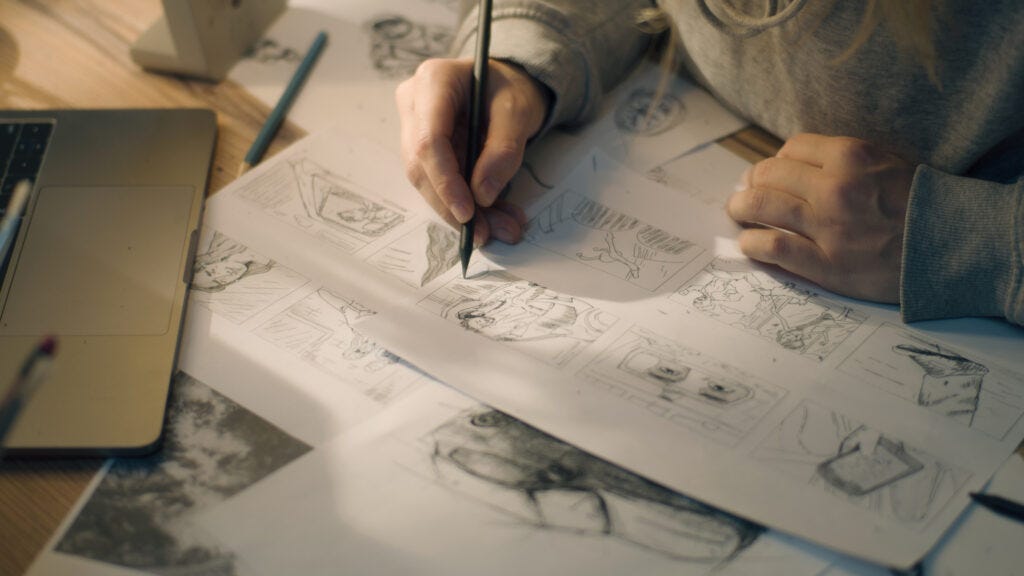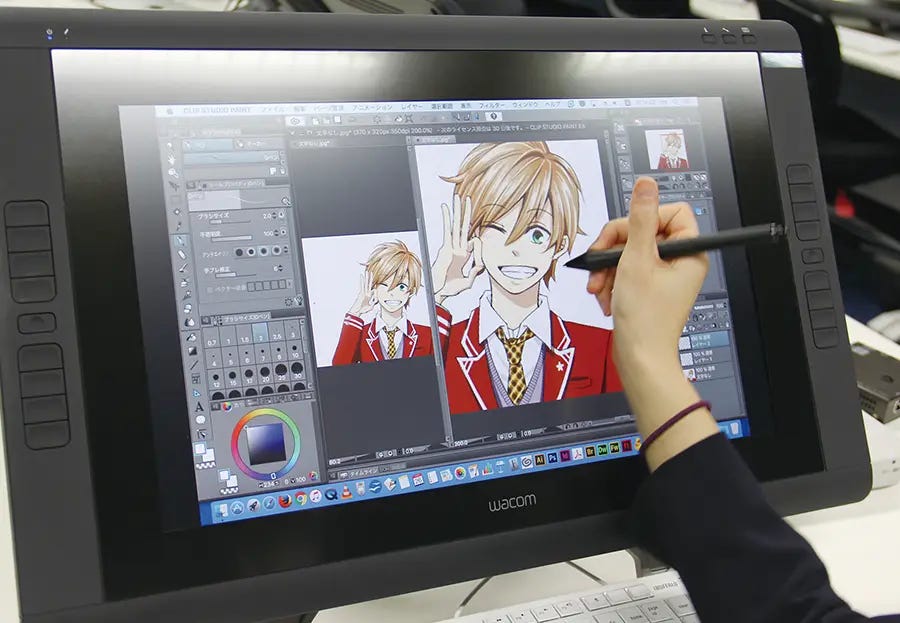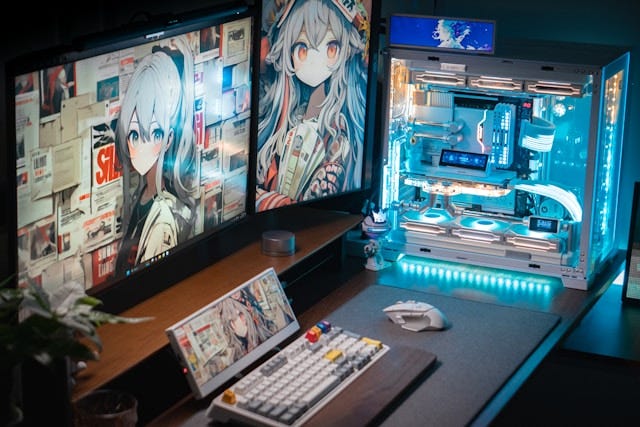Foreign Animator Says Japan’s Anime Industry Is “Way More Brutal” Than Fans Realize
Japanese pop culture news edited by Patrick Macias
Myanmar-born animator shares firsthand account of working in Japan’s demanding anime industry
Classmates in anime vocational school were 80 percent foreign students
Faced intense workload, late nights, and constant scolding from her boss
“The anime industry is extremely shady!” says Pyo Pyo Yadana with conviction. She is likely the only person from Myanmar currently working in Japan’s anime industry. Friendly and straightforward, she speaks fluent Japanese almost indistinguishable from a native speaker. She recalls with a wry smile that her first job in Japan was extremely tough. “I once tried to leave around 11:50 p.m., and another staff member said, ‘You’re going home already? That’s weak. Other studios work all night.’”
She worked six days a week until late at night, drawing backgrounds for five anime series with just four employees. “An episode of anime has about 300 background images,” she explains. With five shows overlapping and episodes airing weekly, the company produced roughly 1,500 backgrounds per week. Pyo Pyo drew about 30 backgrounds a day.
Encountering Unfair Treatment at Work
While outsiders might not grasp how extreme the workload is, she notes, “Other companies do about three a day.” She was also scolded daily by her boss, who checked her work and often lectured her for two hours at a time about why she drew a certain way, only to reject the corrections and scold her again. Sometimes she felt she was treated more harshly because she was foreign.
“I once got yelled at because the curtains looked strange, but I had not drawn them.” Each scene’s assignments were tracked, and the list showed a Japanese coworker had done that cut. When she pointed it out, the boss fell silent, and the Japanese coworker was never reprimanded. Despite the unfairness, she persevered because she loved anime and drawing, the very reasons she came to Japan.
Growing Up in Myanmar With Anime Dreams
Pyo Pyo, from Kachin State in northern Myanmar, was fascinated by Japanese anime from childhood. “Sailor Moon, Doraemon, Naruto… I especially loved Naruto. I once drew a picture of me holding Sasuke’s hand on the wall and got scolded by my mom.” Seeing her passion for anime, her father suggested she go to Japan to study. Relatives in Japan eased her parents’ concerns, so she decided to go.
She first studied Japanese in Yangon, and in just one year earned the highest JLPT level, N1. In March 2018, she arrived in Japan and went straight from the airport to Akihabara instead of her relatives’ home. “I thought it was amazing to see otaku guys with bags covered in badges, and cute maid café girls holding signs.”
Struggling to Fit In With Classmates
After more language study in Takadanobaba, she entered an anime vocational school, learning every skill needed to make anime: character animation, backgrounds, filming, voice recording. She was surprised to find most students were foreign. “Out of 60 in my class, 48 were foreign. Most were Chinese, a few Vietnamese. I was the only Myanmar person.”
She speculates Japanese people avoid the industry because they know its harsh realities, while many foreigners love Japanese anime and want to study it. Although students were expected to collaborate on anime projects, groups tended to form along national lines. She ended up alone, then joined a Chinese group where everyone spoke Chinese, leaving her isolated. “I was really depressed.”
After talking to a teacher, she joined a mixed group of Japanese, Chinese, and Vietnamese students, but this too was difficult. “We always fought. Everyone insists on their own ideas when making anime.” Creative differences caused the group to gradually split apart.
Anime School Classmates Dropped to One Third
By her second year at the anime vocational school, the number of classmates had dropped sharply. “Out of the original 60 people, only about 20 were left,” Pyo Pyo recalls. Many had returned to their home countries or switched career paths after realizing the anime industry’s harsh realities.
After graduation, she began job hunting. While she had high hopes, reality set in quickly. One company offered a base salary of only 60,000 yen a month plus commission. “That’s barely enough to live on,” she says. Still, she accepted a job at a background art studio, thinking it would be her entry point into the industry.
Facing Exhausting Schedules and Low Pay
Her first company was even tougher than she imagined. She worked on five anime projects at once with just a handful of staff, producing massive volumes of background art under constant pressure. “I was drawing until past midnight almost every day. It felt endless.” Even with the small base pay, she often stayed late without overtime compensation.
The company president reviewed every background she drew, frequently berating her in long lectures. Sometimes the criticism was about work she had not even done. “If it was drawn by a Japanese coworker, they would not get yelled at,” she says. The double standard made her feel she was targeted more harshly because she was foreign.
Deciding to Leave After Three Years
After enduring the conditions for three years, Pyo Pyo decided to leave the company. “I loved drawing, but I could not keep going like that. I was exhausted.” Quitting was not easy, but she knew her health and future were at stake.
Even with the struggles, she treasures the moments when her work reaches viewers. “When I see people talking about the anime I worked on after it airs, I feel like my efforts meant something,” she says. Knowing her art plays a part in bringing stories to life still gives her a sense of pride and motivation to continue in the field.
Today, Pyo Pyo continues to work in Japan’s anime industry, one of the very few from Myanmar in the field. Despite the hardships, she is determined to keep improving her craft and hopes to see better working conditions for future generations of animators. “Anime is my passion,” she says. “That is why I am still here.”










I'm 40 from France and had the amazing opportunity to work in South Korea during a year within an in-between animation team. It was a one life opportunity helped me envision how harsh life in the industry overseas is hard to cope with. I worked from 8.30 to 3 o clock and realised people around me hadn't even been teached. So much pressure noone there even use sketching as a pation way of communicating between their coworkers. At least u can play basketball at night once you re done before ring Ur girlfriend's bell! Then go to swim 7 before it starts all over again;)